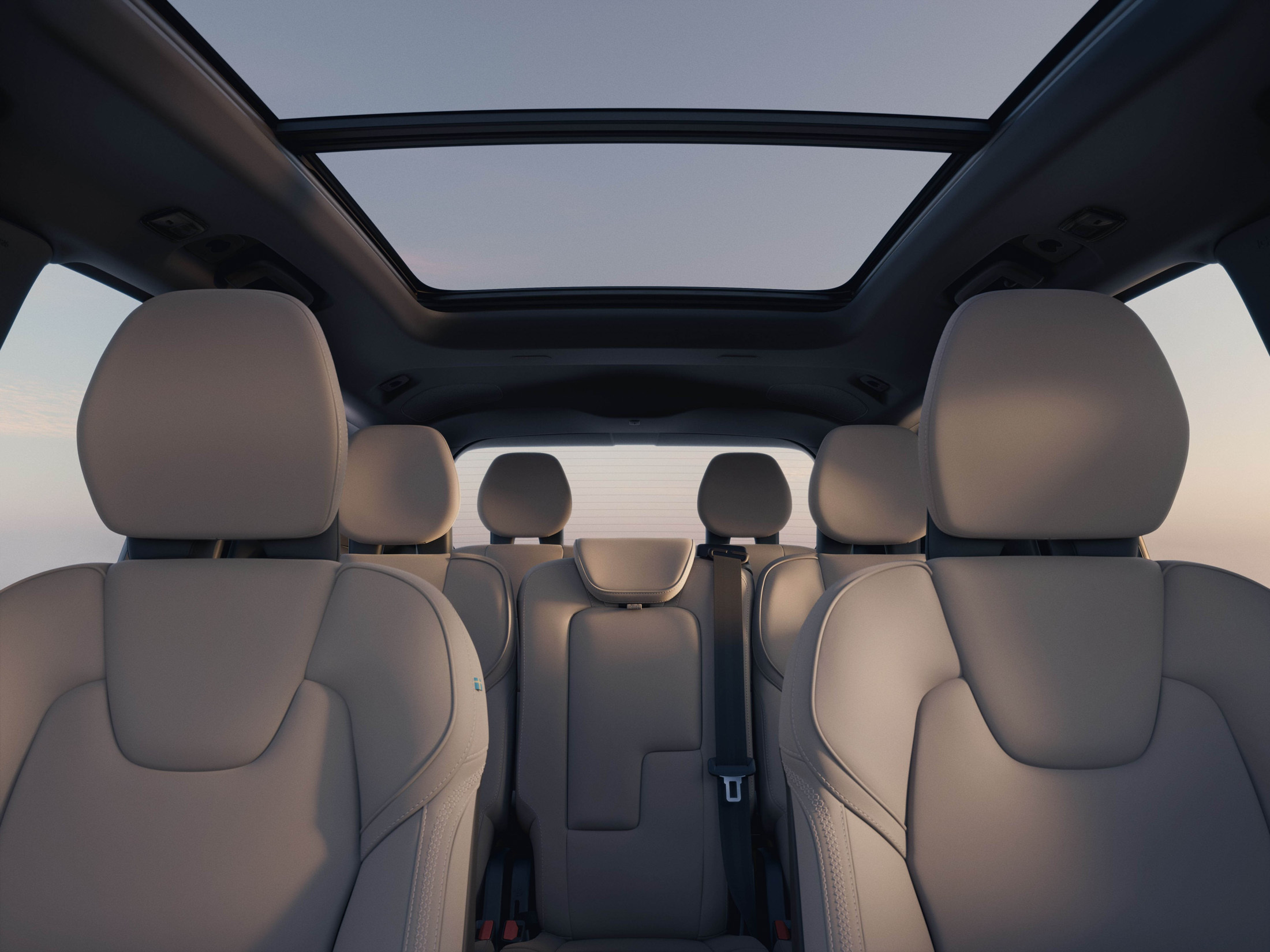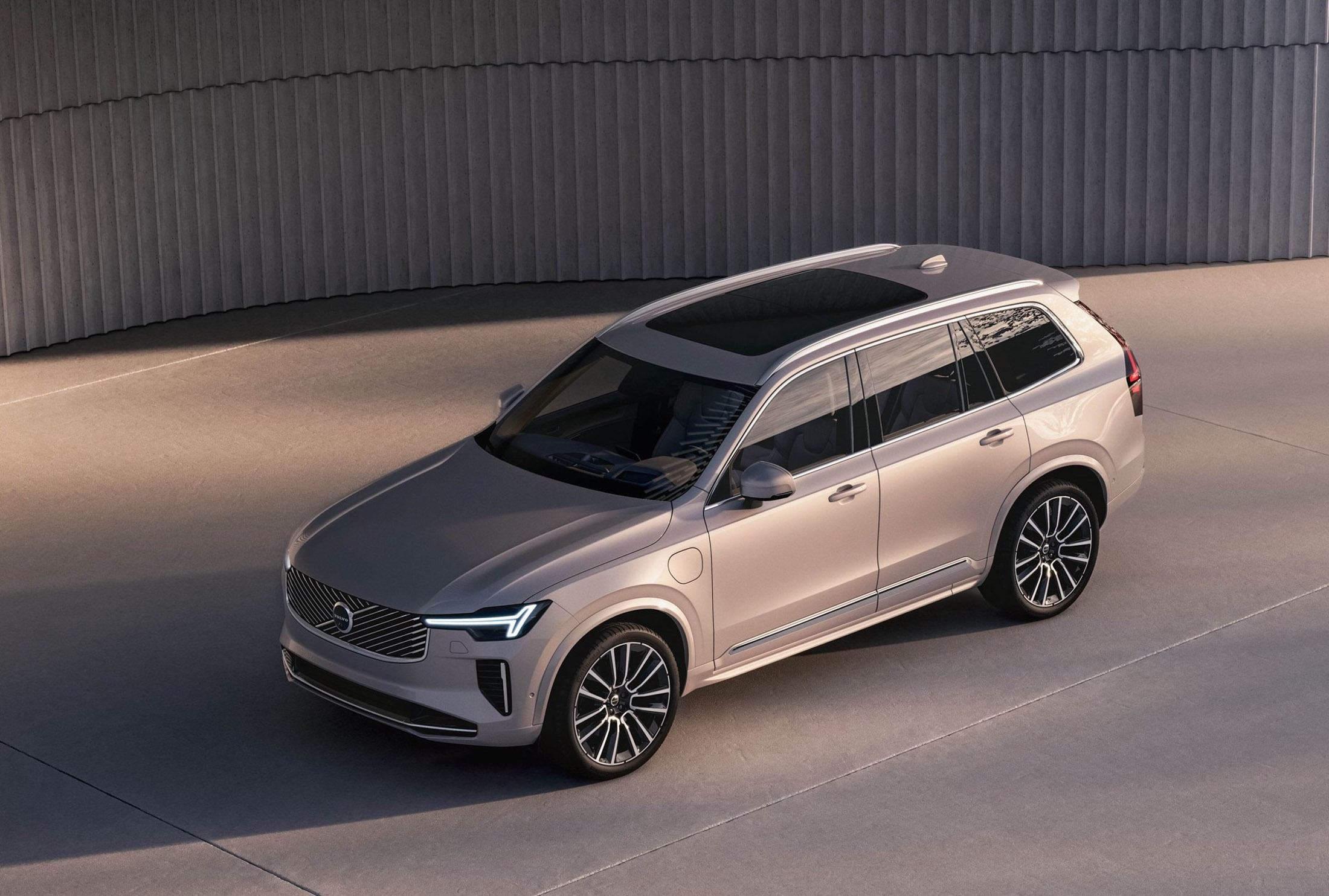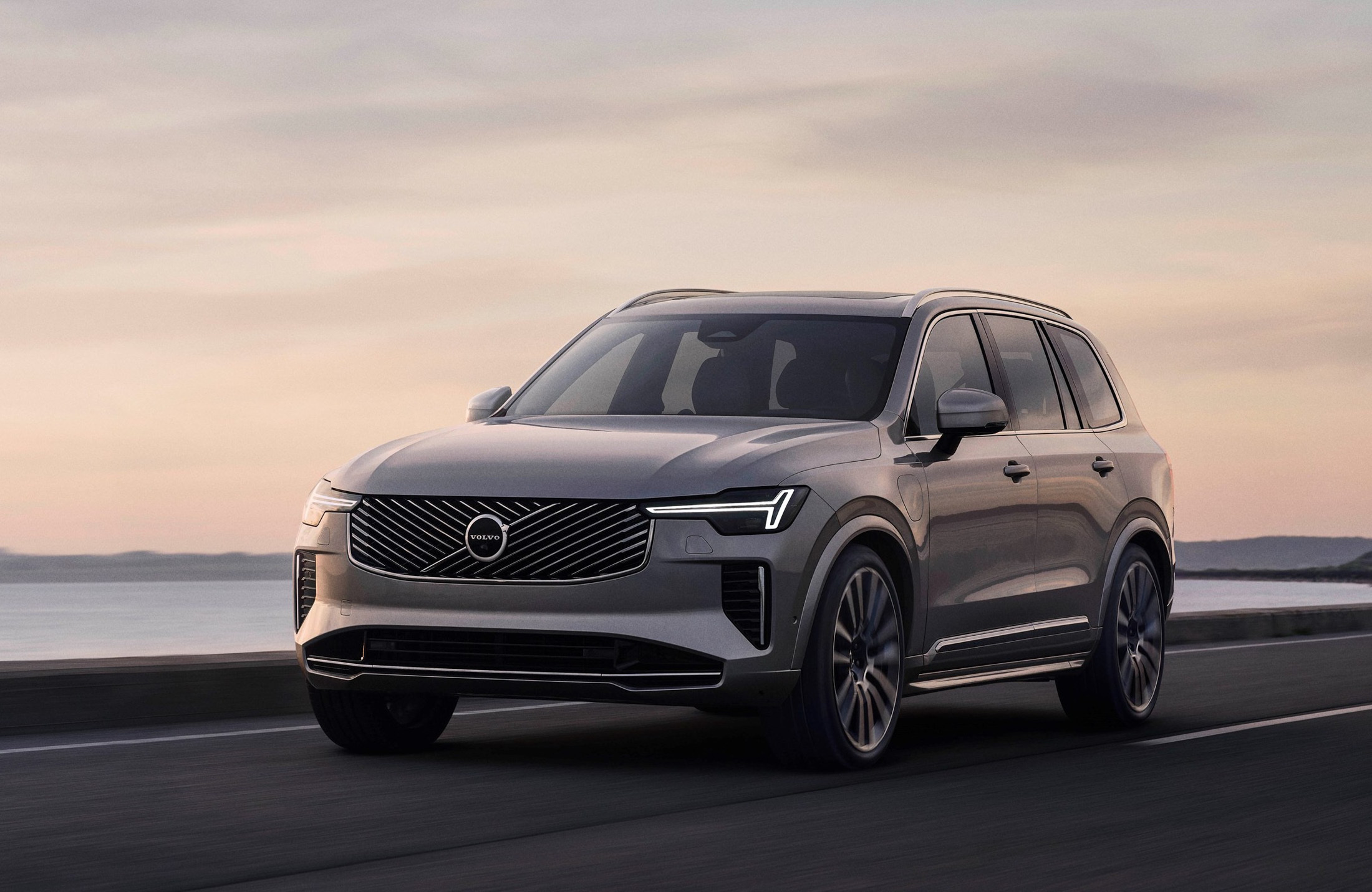- Volvo reveals another facelift for the 2nd-gen XC90, first launched in 2015 and last updated in 2019.
- The XC90 now features a new grille, updated lights, dashboard, and a portrait-oriented touchscreen.
- The updated hybrid lineup improves efficiency but only offers a disappointing 44 miles of EV range.
Volvo has unveiled another facelifted version of its long-running XC90 SUV, offering better efficiency from its hybrid drivetrains, and upgrading the interior tech and materials. But when you’re only a couple of minutes into the livestream launch and the guy on stage is talking about a new cupholder, you know this is not going to be a radical overhaul.
And sometimes that’s okay. Some cars age well and don’t need much of a freshen-up at the typical three-year interval. But we first clapped eyes on the second generation XC90 in 2014 and it went on sale the following year before being facelifted for the first time in 2019. Has Volvo phoned this one in?
Related: Volvo Quietly Jacks Up EX90 Price While Omitting LiDAR And Other Tech
The XC90 is still a handsome SUV, and the revised Thor’s Hammer lights, which nod to the electric EX90 that’s finally gone on sale, and the new diagonal pattern grille only makes it more so. The interior is subtly improved too, with the addition of new materials and a portrait touchscreen that now measures 11.2 inches instead of 9.0 inches, and whose operating system has been rejigged to make apps more accessible with fewer finger presses.
Oh, and that new cupholder can grip skinny cans and bottles so they don’t rattle around in a space normally designed for bigger ones. That’s not a pointless update, and apparently comes in response to customer feedback, as does the additional storage space in the center console, and repositioned wireless phone charger. But we’d have rather seen Volvo expend some energy making meaningful improvements to its PHEV drivetrain’s EV range.
The new T8, which again mates a 306 hp (310 PS) petrol engine with a 143 hp (145 PS) motor, can travel 44 WLTP miles (70 km) on a full charge. But that puts it behind more modern PHEV SUVs such as the smaller VW Tiguan and larger Range Rover, both of which have raised the PHEV range bar to 70 miles (113 km). Even Audi’s ancient Q7 PHEV can do 52 miles (84 km) before having to call on the ICE engine for support.
On the plus side, the XC90’s 247 hp (250 PS) turbocharged, four-cylinder B5 and 296 hp (300 PS) turbocharged and supercharged B6 mild-hybrids promise mpg improvements and revisions to the suspension and amount of soundproofing are said to make the XC90 both quieter and more comfortable.
Do you think Volvo has done enough to its aging XC90 SUV to keep interest up for the next few years, or could it have tried harder? Leave a comment and let us know.






































